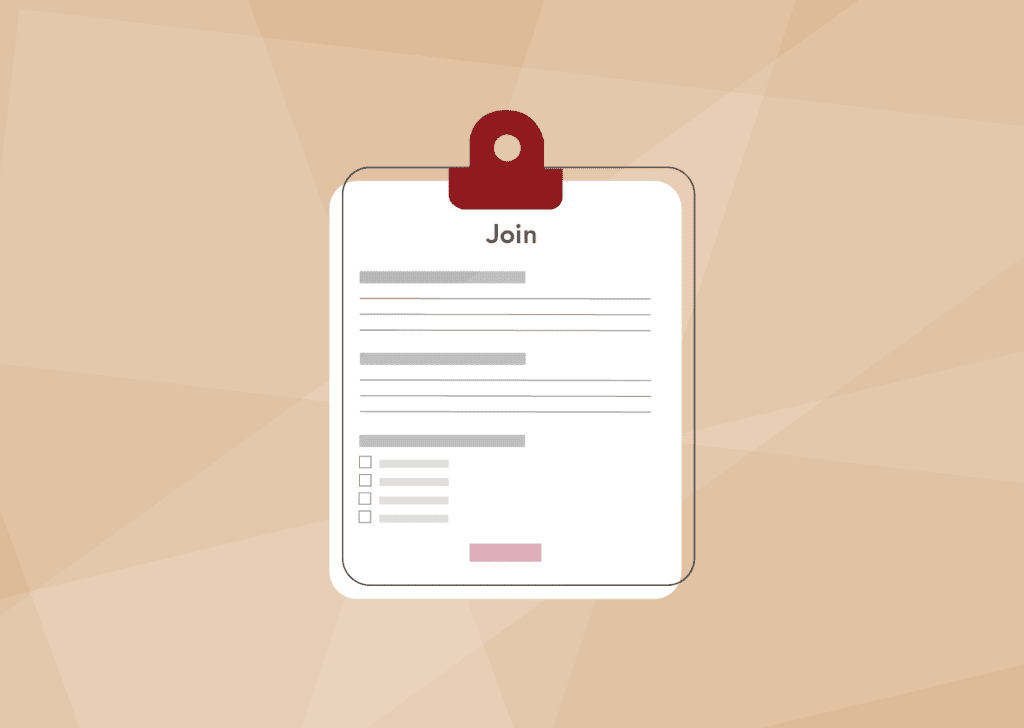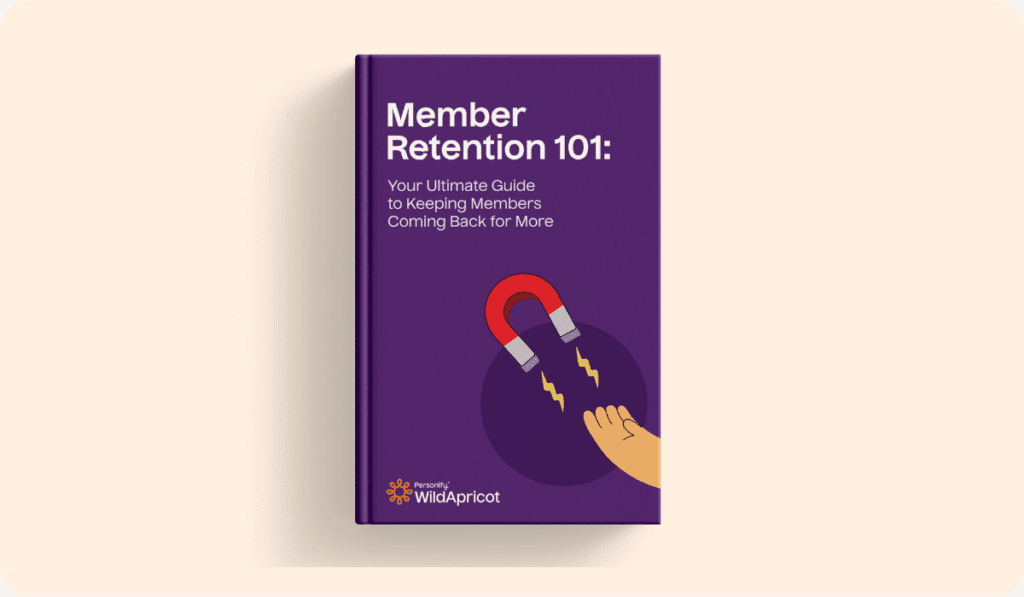You’ve designed a value-packed membership program that offers amazing benefits and gives your members access to highly sought-after resources. So how is it possible that your renewal rates keep declining? Why are members dropping off when they should be thrilled to continue receiving the benefits you worked so hard to create for them?
The answer may lie in your onboarding process — an ineffective process (or lack of one altogether) is one of the most common culprits behind low retention rates. Without onboarding, most new members never get introduced to all that your organization can do for them, so when the time comes to renew, they don’t see the value in continuing their membership.
In this post, we’ll be talking about designing an onboarding process that empowers and inspires your members to get involved and get the most out of their membership. In turn, this will improve your organization’s retention rates and help you grow your community.
Whether you’re creating an onboarding process from scratch or updating an existing one, we’ll share seven tips that will help you properly welcome new members to your organization and make sure they stick around for years to come.
Why Does New Member Onboarding Matter?
Every membership organization should have an onboarding process for new members. Here’s why:
1. It introduces members to all the benefits and services available to them.
An onboarding process helps new members understand how your organization can solve their problems and how they can take advantage of your benefits. It’s not enough to simply list your member benefits on your website — you need to give clear instructions for how, when, and where they can access each of these benefits. Without this, members will be left to their own devices, wondering when you’ll step in to guide them. More often than not, they’ll leave the membership feeling like it wasn’t worth their money.
2. It gives members an idea of what to expect.
Members are happiest when their membership experience meets their expectations. You can help make this happen by letting them know what to expect — how often you’ll send communications, how many events you’ll be inviting them to, what kinds of networking opportunities will be available to them, etc. Setting these expectations during the onboarding process will also get new members excited about what’s to come, so they’ll be much more likely to participate and use their membership to its full extent.
3. It offers an easy way for newcomers to start connecting with other members.
A big reason why members join membership organizations is because it provides them with networking opportunities and allows them to connect with like-minded people. However, making connections as a new member can be hard, especially for introverts or people who are joining the membership virtually. You can make new members feel more comfortable by facilitating new connections as part of the onboarding process. Include a brief networking component, invite members to do something as a team, or match new members with existing ones to facilitate peer-to-peer support.
Read More: How To Welcome New Members To An Organization
When new members are familiar with the benefits available to them, know what to expect, and can form friendships with other members, they are much more likely to have a positive experience and renew their membership when the time comes. Thus, by implementing an effective onboarding process, you can directly impact your member retention rate and grow your organization.
Creating an onboarding process is not a one-off task — it requires a bit of trial and error, gathering feedback from members, and regularly updating the process to make sure it meets your members’ and your organization’s needs. So, get ready to put in some work as you slowly make your onboarding process the best that it can be.
Now, without further ado, let’s get into the seven things you should keep in mind as you’re creating or updating your new member onboarding process.
1. Create a New Member Welcome Email Series
A welcome email series is a set of emails that new members will automatically receive upon joining your membership. New members will expect to receive the first email within minutes of joining. It should confirm that their payment went through, their membership is active, and their login information is ready to use.
Once the first email is sent, you can use the rest of the emails to officially welcome the new members to the organization and communicate important information they’ll need to know to make the most of their membership (for example, upcoming events, where to find useful resources, how to use the online community platform, etc).
Sending all of this in one email would be far too overwhelming, so be sure to split it up between 4-5 welcome emails. It’s up to you to decide how often you’ll send them, but once a week is typically a great cadence. This will also get the new members used to hearing from you on a regular basis, while gently reminding them that you’re there and always ready to serve them.
When preparing your welcome emails, be sure to personalize them as much as possible — for example, use merge fields to include each member’s first name in the salutation — and vary the content of each message to keep members engaged and interested in learning more.
2. Create New Member Onboarding Materials
Your welcome emails can be short and sweet — most people won’t spend more than a few minutes reading them. However, you still need to put together more detailed materials to help new members get acquainted with your organization and learn how to make the most of their membership. These can be web articles, digital booklets, or videos.
A great option is to send welcome emails that include a brief summary of the onboarding material, but then link to a more in-depth version.
If your members prefer physical materials over digital ones, consider sending welcome packages in the mail or handing them out at your first in-person meeting. These can include things like informational booklets, membership certificates, a calendar of upcoming events, your contact information, and anything else you think they might need to know.
3. Get New Members Acquainted with Your Community
We’ve already talked about how new member onboarding is a great opportunity to help newcomers form connections with other members. Here are few ideas for how you can introduce new members to the rest of the community:
- Welcome new members on social media
- Spotlight new members on your website
- Host an orientation event for new members so they can all meet each other
- Host a networking event and help new members find someone with whom they have something in common (for example, same alma mater, similar interests, similar experience or career goals, etc).
- Start a mentorship program and match new members with existing ones
4. Extend Personalized Event Invitations to New Members
Hosting events, whether in-person, virtual, or hybrid, is one of the best ways to offer value to your members. Not to mention, members who get into the habit of attending your events on a regular basis are much more likely to remain active and engaged in the long run and to renew their membership year after year.
Unfortunately, new members often hesitate to start attending events. Many wait until they’ve made some friends at the organization to avoid feeling uncomfortable and out of place.
To help newcomers feel more comfortable about coming out to events, try the following:
- Send them a personalized invitation: a handwritten note from you will be much harder to refuse than a mass email invitation.
- Share in-depth information about the event: tell them about the benefits of attending and let them know what they can expect when they get there. Invite them to get in touch with you should they have any questions or concerns regarding the event.
- Use the buddy system: introduce them to an existing member (or a fellow new member) who will also be attending. Encourage them to connect before the event and make plans to meet there or even head over together.
5. Track New Members’ Onboarding Journeys
As you take each new member through the onboarding process, keep a close eye on what activities and communications they respond well to. This will help you personalize their membership in the future and make their member experience a more positive one, increasing the chances of retaining them in the long-term.
More importantly, keeping track of how new members are responding to your onboarding process can help you optimize it. With each batch of new members, take note of things like email open rates, their event attendance, and their level of engagement in your online community. If these metrics aren’t quite where you’d like them to be, perhaps there’s an opportunity to make some improvements to their onboarding journeys.
6. Ask For Feedback on the New Member Onboarding Process
Another great way to identify areas for improvement in your onboarding process is to ask your members directly. After a few months of membership, send them an online survey or conduct interviews to gather feedback. If people leave the membership within a year of joining, conduct an exit interview and ask them what you could have done better during their onboarding.
Your members and what they want out of their membership will change and evolve overtime, so be sure to ask for feedback often. Doing so will allow you to update your onboarding process to meet the current needs of your newest members.
7. Invest in Membership Management Software
If you don’t yet use membership management software (MMS), now’s the time to try it. It will not only drastically improve your onboarding process but will make a noticeable difference in just about every aspect of your membership program.
With membership management software, you can:
- Build a sign-up form on your website and connect it to your member database, so that new members are automatically added to the system
- Send automatic welcome emails to new members
- Process member dues, donations, and event registration fees
- Give your members access to member-only areas of your website so you can share exclusive resources and other benefits
- Pull reports to analyze your finances, membership growth rates, retention rates, etc.
- And much more!
Improve Your New Member Onboarding Process with WildApricot
Here at WildApricot, we’re proud to be the number one membership management software used by thousands of small to mid-sized membership organizations. When you’re ready to give MMS a try, be sure to sign up for a free 60-day trial.










